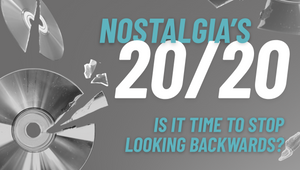
Opinion: Image-Led Marketing

There is one old adage that will always ring true: A picture can paint a thousand words. With attention spans becoming shorter than ever in a world bursting at the seams with non-stop content, its little wonder that networks such as Instagram and Pinterest are thriving. Instagram made a move to court brands with its taggable ‘Photos of You’ upgrade, whilst Pinterest has introduced a whole new pin format to leverage brand partnerships – and it already has the likes of eBay, Target, ModCloth, Sony and Netflix on board.
However, brands looking to take advantage of such platforms should be wary of rushing in to take advantage of the latest social channel, particularly now they’ve received a formal invitation by way of these upgrades.
What makes visuals so potent, can also explain why they can be a tricky area for control-conscious brands to navigate. The ability to paint a thousand words is alluring, but who defines those words? Not the creator, rather it’s the person viewing it. Indeed, every one of those thousand words is open to the interpretation of reader. Beauty, of course, is in the eye of the beholder and to continue this metaphorical theme, what if you’re too far into the woods to see the trees?
So often the downfall of a naïve brand on social platforms stems from failing to understand how a piece of content or communication will be interpreted by its audience. On a weekly basis we see an insensitive, offensive, or just plain excruciating brand campaign – take Nike’s England launch this week for instance. The new football kit was unveiled by Arsenal player Jack Wilshere, who visited his old school and allowed a lucky pupil to be the first to model the shirt. A lovely gesture, but Twitter’s immediate reaction was to point out an uncanny resemblance to the kit of Germany. Ultimately, intentions count for very little in marketing and by letting pictures do the talking for you, there’s little opportunity to remove any doubt.
Like all brand-consumer interaction in the modern day, it further reinforces the need for brands to be ever-mindful of the position they take within the consumer’s world and create engagement based upon that knowledge. Time is precious and advertising messages number in the thousands, thus brands can’t afford to become an obstructive presence; rather seek to add value.
The new brand partner pins on Pinterest potentially offers brands to do just that and supplement existing content with valuable additional information. For example, these new pins can be added to food images to provide the relevant recipe without leaving the page, or Netflix could supplement a movie poster with some additional cast information and similar films – both ways in which brands can enhance the experience without intruding upon it. However, over-enthusiastic brands could likewise quickly spark negative sentiment by appearing too sales-driven.
It’s a tricky balance to maintain, but creating a successful image-led strategy requires the building of some key foundations. Firstly, the brand has to have some very clear guidelines on the tone it has adopted on these social channels. The evolution of multichannel through to omnichannel means that brands can no longer simply exist within a channel; consumers now expect the experience to translate perfectly across every channel.
Secondly, the content has to be engaging, for content is irrelevant without context. ABC news, for example, is one of the few news organisations that engages on Instagram, but does a wonderful job in visualising news through the photos it shares.
Thirdly, and most importantly, everything needs to be rooted in a thorough understanding of your consumer. Particularly as human behaviours, needs, desires, motivations and nuances evolve, every minute detail offers valuable insight. Brands need to work hard to understand where and how they fit into their audience’s world, and create engagement based on that knowledge. Once you have that knowledge, the question of whether to adopt an image-led strategy will become clear.















